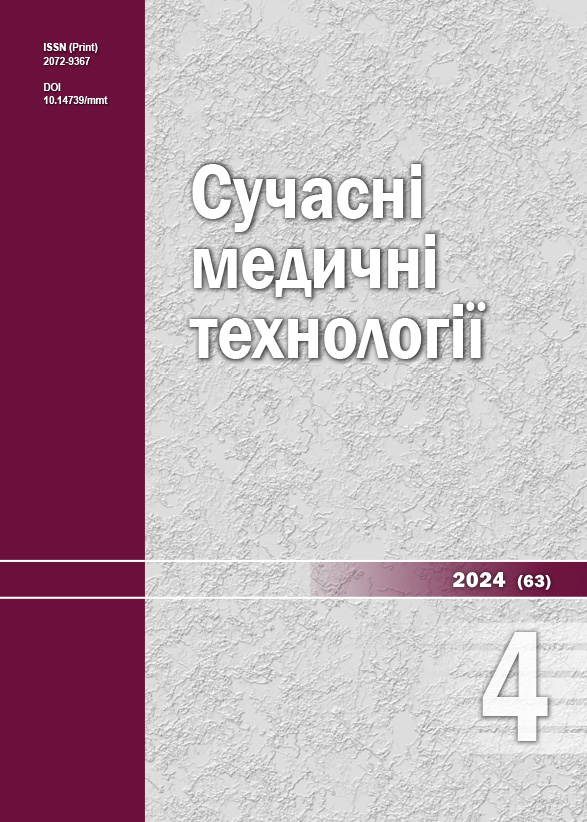Ultrafine industrial aerosol as an occupational risk factor for sintering industry workers
DOI:
https://doi.org/10.14739/mmt.2024.4.311754Keywords:
metallurgical production, sintering factory, ultrafine industrial aerosol, suspended particulate matter, occupational riskAbstract
Aim. Assessment of the physicochemical characteristics of suspended particulate matter of the ultrafine range present in the air of the working area of the sintering factory of a metallurgical plant.
Materials and methods. The assessment and analysis of the physicochemical parameters of ultrafine particles were carried out in different areas of the sintering factory of the metallurgical plant. The parameters were measured using a portable scanning spectrometer Nanoscan 3910 (USA). The chemical composition of the suspended particulate matter was determined by the method of optical emission spectrometry with inductively coupled plasma (OES-IZP) using the device “Ortima 2100 DV” (PerkinElmer, USA).
Results. It was estimated that the concentration of suspended particulate matter of ultrafine size in the main part of the sintering machine ranged from 3.02 × 104 to 3.12 × 104 per cm3, in the tail part of the sintering machine – from 5.09 × 104 to 7.59 × 104 per cm3, in the sintering machine control room No. 1 – from 2.06 × 104 to 2.38 × 104 per cm3, in the workers of the control group – from 1.43 × 104 to 1.73 × 104 per cm3. The quantitative concentration of suspended particulate matter by individual sizes at all workplaces of the sinter plant workers compared to workers of the control group had a significant difference. Values of the total surface area and surface volume of suspended particulate matter of the nano-sized range had their maximum in the tail part and near the head of the sintering machine, the lowest values were recorded around the control room and among the employees of the plant management department. The highest mass concentration of ultrafine particles was recorded in the tail part of the sintering machine (22.55 μg/m3 to 508.35 μg/m3), which is associated with a significant amount of suspended particulate matter of a larger size (≥115.5 nm). The chemical composition of the particles of the ultrafine range included aluminum, calcium, iron, magnesium, manganese, silicon, and phosphorus, which is explained by the specifics of the technological process, and the exceeding of the hygienic standard was observed for calcium, silicon and phosphorus.
Conclusions. It was established that during the sintering of the agglomerate in the agglomeration compartment, many suspended particles of the ultrafine range are formed. They included aluminum, iron, manganese, magnesium, silicon, phosphorus, and calcium. Significantly higher values of the number, mass concentration, surface area and surface volume of suspended particulate matter were determined at the workplaces of sintering factory workers, which had a statistically significant difference compared to the workers of the control group.
References
Belokon KV, Troicka OO, Ryzhkov VG. [Analysis of harmful and dangerous productive factors of electrometallurgy production]. Collection of scholarly papers of Dniprovsk State Technical University (Technical Sciences). 2019;1(34):150-6. Ukrainian. doi: https://doi.org/10.31319/2519-2884.34.2019.29
Pavlenko OI. [Determination of the permissible period of work in the conditions of modern metallurgical production]. Coliection of scientific works of staff member of P. L. Shupyk NMAPE. 2018;29:380-92. Ukrainian. Available from: http://nbuv.gov.ua/UJRN/Znpsnmapo_2018_29_37
Sharavara LP, Dmytrukha NM. [Working conditions as a risk factor for the health of employees of a metallurgical enterprise]. Bulletin of problems in biology and medicine. 2024;1:126-38. Ukrainian. doi: https://doi.org/10.29254/2077-4214-2024-1-172-126-137
Oryekhova OV. Suchasnyi stan umov pratsi v metalurhinomu vyrobnytstvi Ukrainy [The current state of working conditions in metallurgical production of Ukraine]. ScienceRise. Medical science. 2016;(10):34-9. Ukrainian. Available from: http://nbuv.gov.ua/UJRN/texcsrm_2016_10_8
Nahorna AM. Medico-social and demographic characteristics of the formation of occupational morbidity in Ukraine in the pre-war period and during martial law. Ukrainskyi zhurnal z problem medytsyny pratsi. 2022;18(3):171-80. doi: https://doi.org/10.33573/ujoh2022.03.171
Prodanchuk MH, Basanets AV, Kravchuk OP, Hashynova KY, Hvozdetskyy VA. [Analysis of the dynamics of occupational morbidity and its consequences in Ukraine in comparison with other countries of the world]. Medichni perspektivi. 2023;28(3):137-52. Ukrainian. doi: https://doi.org/10.26641/2307-0404.2023.3.289217
Trachtenberg IM, Dmytrukha NM, Kozlov KP. [Cardio-vasotoxic effect of heavy metal compounds and their nanoparticles (review)]. Ukrainskyi zhurnal z problem medytsyny pratsi. 2022;18(3):237-52. Ukrainian. doi: https://doi.org/10.33573/ujoh2022.03.237
Calderón-Garcidueñas L, Ayala A. Air Pollution, Ultrafine Particles, and Your Brain: Are Combustion Nanoparticle Emissions and Engineered Nanoparticles Causing Preventable Fatal Neurodegenerative Diseases and Common Neuropsychiatric Outcomes? Environ Sci Technol. 2022;56(11):6847-56. doi: https://doi.org/10.1021/acs.est.1c04706
Liu NM, Miyashita L, Maher BA, McPhail G, Jones CJ, Barratt B, et al. Evidence for the presence of air pollution nanoparticles in placental tissue cells. Sci Total Environ. 2021;751:142235. doi: https://doi.org/10.1016/j.scitotenv.2020.142235
Calderón-Garcidueñas L, Torres-Jardón R, Franco-Lira M, Kulesza R, González-Maciel A, Reynoso-Robles R, et al. Environmental Nanoparticles, SARS-CoV-2 Brain Involvement, and Potential Acceleration of Alzheimer's and Parkinson's Diseases in Young Urbanites Exposed to Air Pollution. J Alzheimers Dis. 2020;78(2):479-503. doi: https://doi.org/10.3233/JAD-200891
Pryor JT, Cowley LO, Simonds SE. The Physiological Effects of Air Pollution: Particulate Matter, Physiology and Disease. Front Public Health. 2022;10:882569. doi: https://doi.org/10.3389/fpubh.2022.882569
Yavorovskyi OP, Savosko SI, Riabovol VM, Zinchenko TO. [Toxicological and morphological aspects of nano-TiO2 and nano-TiO2-Ag acute action on the liver of mice]. Pathologia. 2023;20(2):162-9. Ukrainian. doi: https://doi.org/10.14739/2310-1237.2023.2.277852
Sharavara LP, Dmytrukha NM, Andrusyshyna IM. [Professional risk factors in the working process of employees of the metallurgical enterprise]. Ukrainskyi zhurnal z problem medytsyny pratsi. 2023;19(4):277-84. Ukrainian. doi: https://doi.org/10.33573/ujoh2023.04.277
Marcias G, Fostinelli J, Catalani S, Uras M, Sanna AM, Avataneo G, et al. Composition of Metallic Elements and Size Distribution of Fine and Ultrafine Particles in a Steelmaking Factory. Int J Environ Res Public Health. 2018;15(6):1192. doi: https://doi.org/10.3390/ijerph15061192
Järvelä M, Huvinen M, Viitanen AK, Kanerva T, Vanhala E, Uitti J, et al. Characterization of particle exposure in ferrochromium and stainless steel production. J Occup Environ Hyg. 2016;13(7):558-68. doi: https://doi.org/10.1080/15459624.2016.1159687
Dmytrukha NM. [Nanotoxicology - a new direction in industrial toxicology, task and research results]. Ukrainskyi zhurnal z problem medytsyny pratsi. 2023;19(1):61-74. doi: https://doi.org/10.33573/ujoh2023.01.061
Jan R, Roy R, Yadav S, Satsangi PG. Chemical fractionation and health risk assessment of particulate matter-bound metals in Pune, India. Environ Geochem Health. 2018;40(1):255-70. doi: https://doi.org/10.1007/s10653-016-9900-7
Downloads
Additional Files
Published
How to Cite
Issue
Section
License
The work is provided under the terms of the Public Offer and of Creative Commons Attribution-NonCommercial 4.0 International (CC BY-NC 4.0). This license allows an unlimited number of persons to reproduce and share the Licensed Material in all media and formats. Any use of the Licensed Material shall contain an identification of its Creator(s) and must be for non-commercial purposes only.














